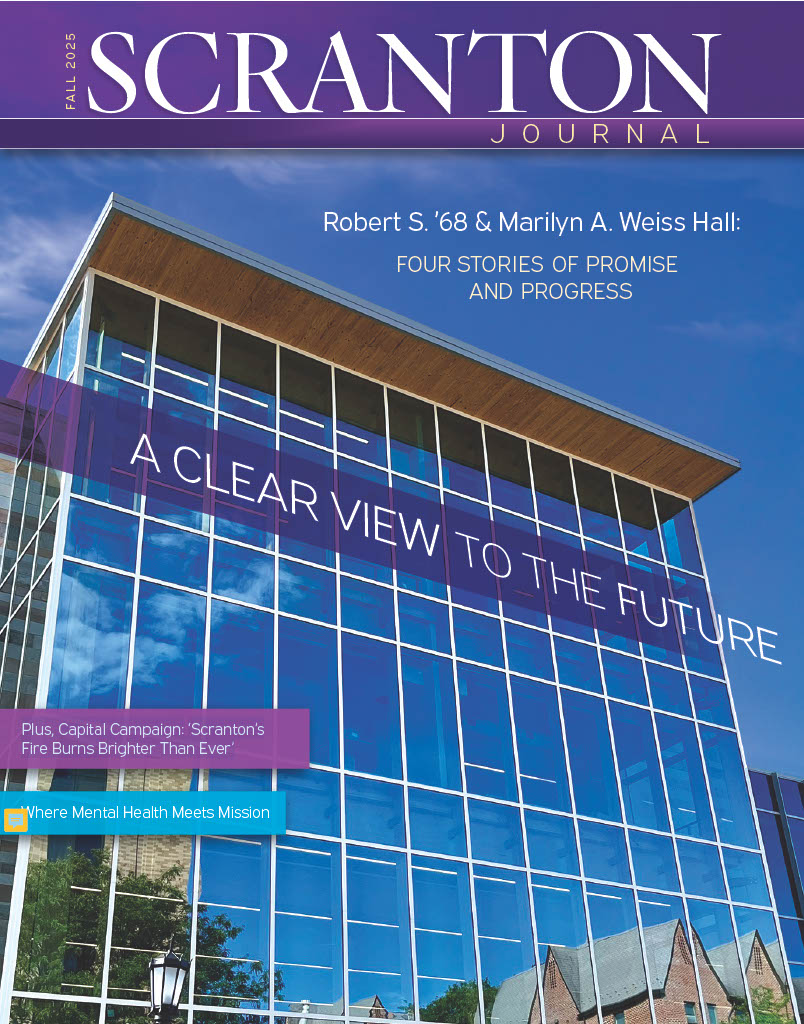
Last summer, Jennifer Janofsky, Ph.D. ’95, organized an archeological dig at Red Bank Battlefield Park, the American Revolution battle site and recreational park across the river from Philadelphia where she is the curator and head of historic operations. She made a point to include more than 100 volunteers from the public working alongside the archeology team, because she always wants people to connect with history in a new way.
Throughout the four-day dig, they found musket balls and pieces of pottery, even a 1776 King George gold coin.
“It made my public historian heart so excited to see everybody so engaged, connecting with history in a way that you don’t connect with a traditional history textbook,” said Janofsky, who is also a history professor at Rowan University in Glassboro, New Jersey, in tandem with her work at the park. Whether she is in the classroom teaching about a historical event or onsite at the park, Janofsky focuses on the human element, the lived experience of the people involved.
That approach became even more important when the summer dig took an unexpected turn. On the final day, they uncovered bones that were the remains of 15 Hessian soldiers, who were German troops hired by the British to fight in the war. The area had not been marked as a burial site in previous surveys of the land, so Janofsky and her team were shocked by the findings and immediately notified local police and the state police forensic anthropology unit. Janofsky said the remains are some of the most significant archeological finds at any Revolutionary War battlefield, ever.
“We were completely overwhelmed — it was exciting, sad and stressful,” Janofsky said. “Essentially, what we were dealing with was battlefield gore. We had femurs, jaw bones, skulls.
They were the remains of the battle that were buried the day after the battle took place.”
Now, they are working with a DNA lab to learn more about the soldiers from their remains, and making plans to educate future visitors to the park about the lives and experience of the Hessian soldiers. It will be part of the other historical programs the park offers, including educational visits for school groups, special exhibits, battlefield tours and even a History Tots program designed to expose preschoolers to historical sites at an early age.
“One of the things that I’m most proud of in my work at the park is the way that we’ve developed inclusive narratives about who participated in the park space.”
“So, that could be the Quaker family who owned the historic house. It could be the African American troops who fought at the Battle of Red Bank on Oct. 22, 1777. It could be the Hessian soldiers who we uncovered from our recent archeological study. Bringing all the voices to the table to tell this inclusive story of the American Revolution.”
Web Exclusive

Red Bank Battlefield Dig
Always wanted to visit an archaeological excavation site? View a photo gallery from Red Bank Battlefield featuring history professor Dr. Jennifer Janofsky '95.
Read ArticleMeeting People Where They Are
At Rowan University, Janofsky is the Megan Giordano Fellow in Public History, and many of her students participated in the dig that uncovered the Hessian soldiers’ remains. She uses her work at the park to teach students how to share history with a public audience, outside a classroom. No matter where she is teaching, Janofsky aims to meet people where they are, influenced by her Jesuit education at Scranton.
“It still surprises me how far you can take the conversation, both with students and outside the classroom, if you present information in a storytelling way, if you share it in ways that are accessible and interesting. You can take them on quite a journey, whether it’s at Rowan University or at Red Bank Battlefield Park,” she said.
That storytelling approach is one she learned from two of her favorite history professors at the University, Dr. Michael DeMichele and Dr. Jack Earl.
“I loved their classes because they were natural storytellers. They would go to the front of the class and they wouldn’t look at their notes. And for 45 minutes, they would tell stories about intriguing people and events,” Janofsky said. “And it just felt so natural, the way they taught and shared information, that it absolutely influences the work that I do today, not only as a university professor but as a public historian.”
Janofsky’s time at the University shaped other areas of her life, as well. It’s where she met her husband, Thomas Janofsky ’96, who was also one of the volunteers at that summer dig. Their daughter, Grace, is a freshman at Villanova University and 16-year-old Luke is a junior in high school, and the family also has two boisterous dogs.
In a career working in military history, Janofsky has often been one of a few women in a male-dominated field. After graduating with a history degree from Scranton, she earned a Master of Arts in history from Villanova and a Ph.D. in history from Temple University. In a way, she says she can relate to the first women who attended the University when Scranton became fully coeducational 50 years ago.
“I can absolutely appreciate what those women must have been going through, especially today as a mentor of young women in the field. How can we coach young women to be confident in these academic spaces? I do think it must have been tremendously challenging for them to go into that environment, and incredibly brave,” Janofsky said.
And for that, Janofsky wanted to share thanks to those who blazed the trail for future women at the University.




